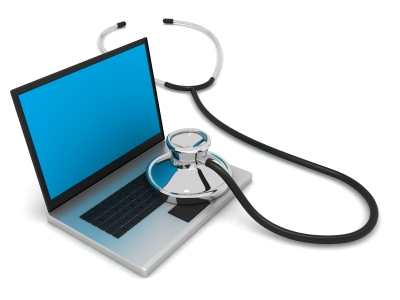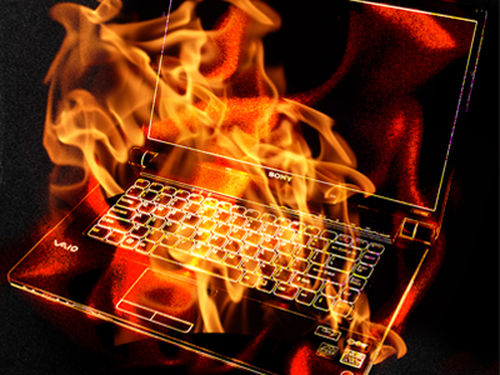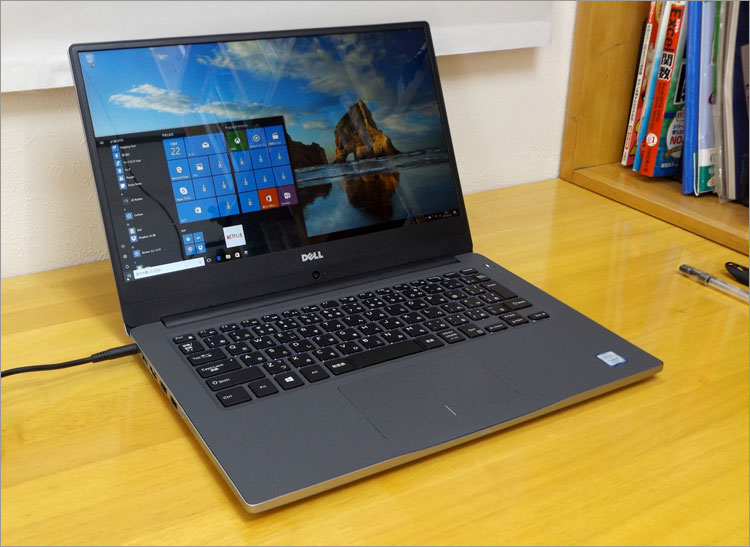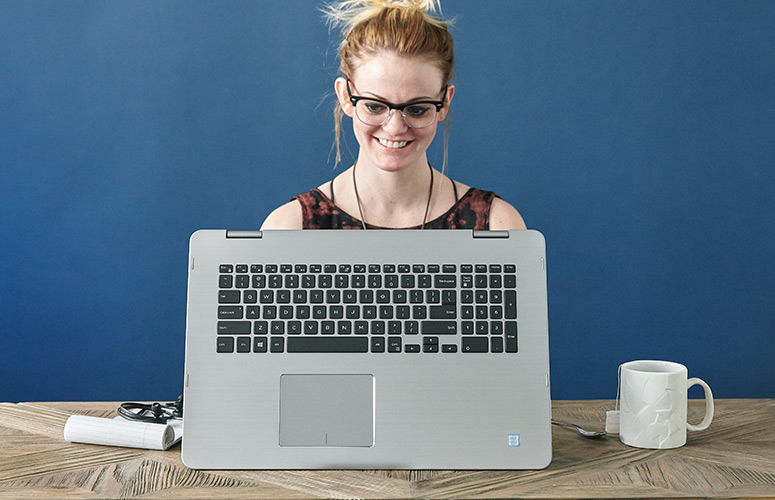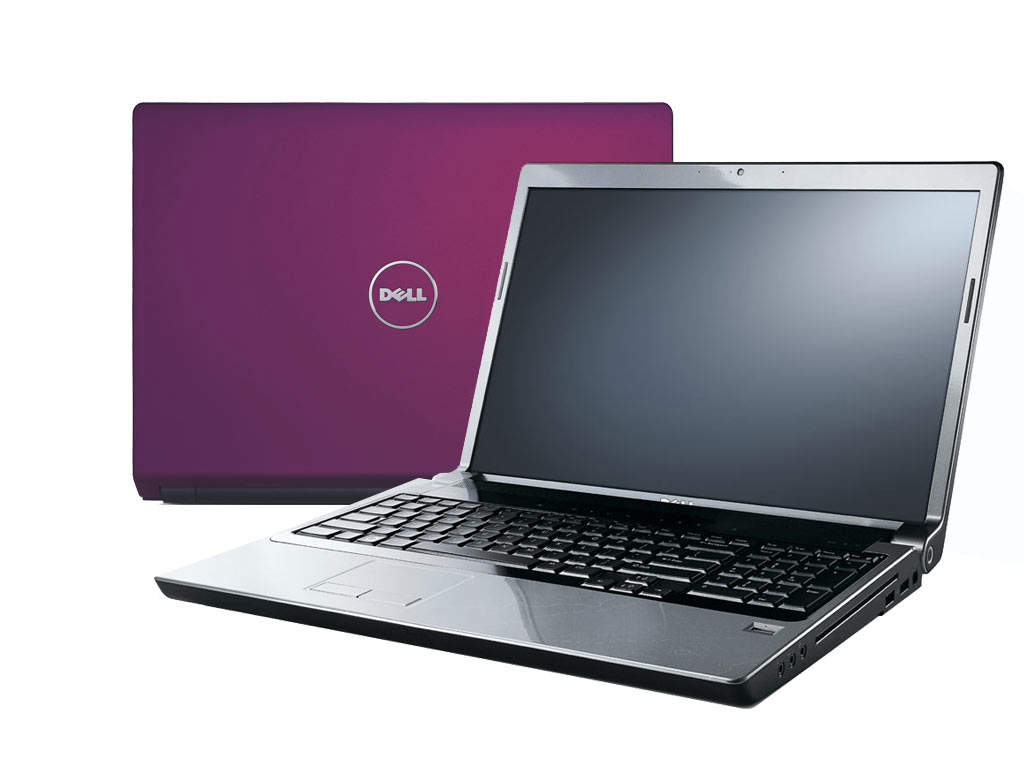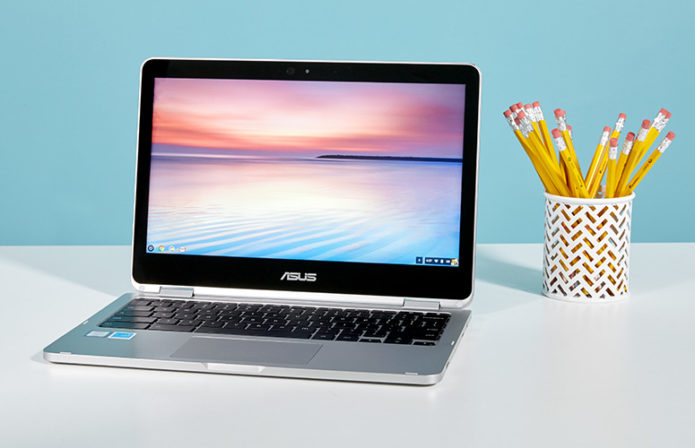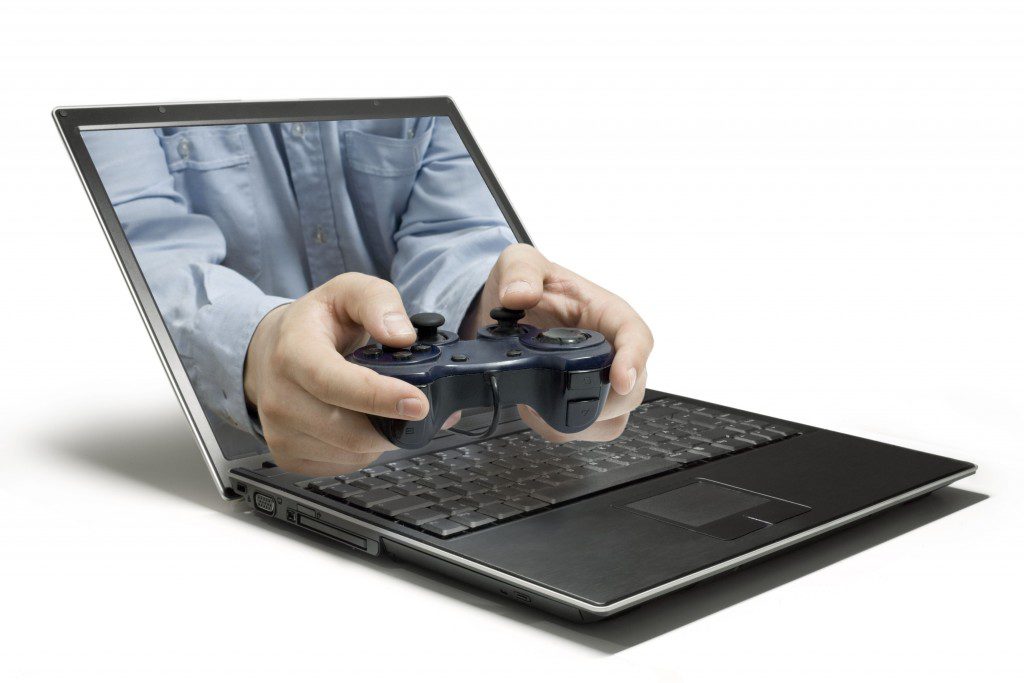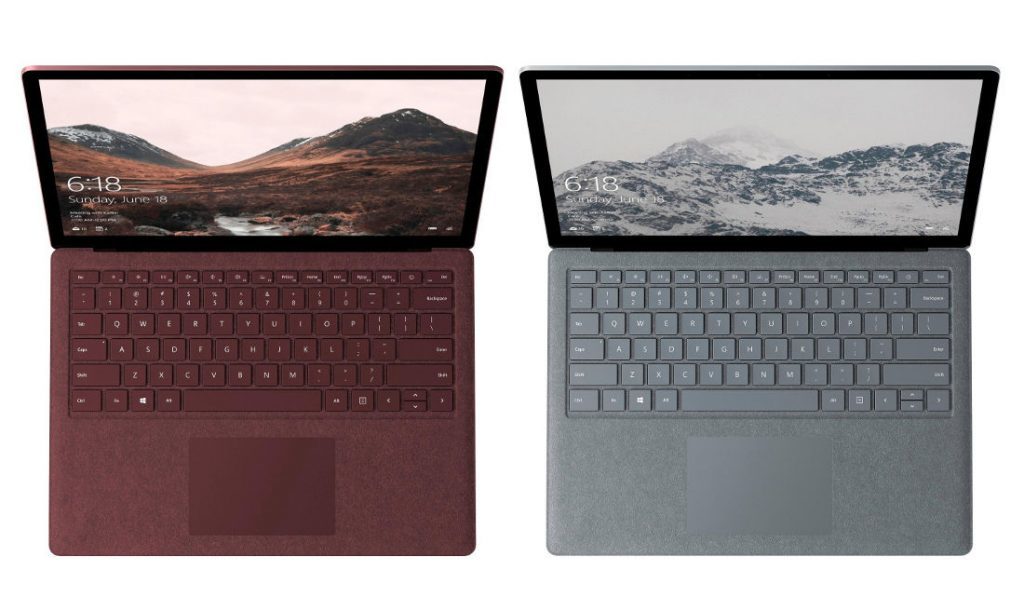13 DIY Fixes for Common Computer and Notebook Problems
What’s wrong with your computer? Did your computer stop starting? Or does your laptop crash in about an hour? Maybe there’s something wrong with the power line, or your mouse doesn’t work properly, or worse, you spilled coffee on the keyboard.
The default option for most people is to get on the phone and call a PC repair shop. Or to contact the vendor for some expensive support. But in the vast majority of cases, you don’t need to rely on these services. Just make sure you know what you’re about to face before you start fixing it.
These DIY fixes will show you just how straightforward it is to repair your computer or laptop yourself.
1. Computer Won’t Boot: Check Your Power Cable
There are many reasons why your computer won’t boot. It might be a problem with the operating system, or the hard disk drive. The motherboard might also have an issue.
But if you’ve checked all of these things already, there is another common issue that many people overlook. Desktop PC power cables — that connect the computer’s power supply unit (PSU) to the mains electric — can simply fail. Perhaps your cable has been bent, causing one of the internal wires to break. If you’re in the U.K., it might be that the fuse has blown.
Either way, many PC issues can be fixed with relative ease by simply switching the power cable.
2. Slow or Hanging Computer
A common problem for laptops and desktop computers is slow performance. This is often blamed on things like a hard disk drive that needs defragging, or a slow processor. And if you’re running an older computer (say, 5-10 years old or more) then this can be the case.
But the main reason for a slow computer, especially when the processor (CPU) is a highly rated one, is a lack of RAM. Memory is vital for the smooth running of a computer. The CPU uses memory constantly. While a CPU with a larger onboard cache will improve overall performance considerably, adding sticks of RAM to your computer is the next best solution.
Before you head out and buy some new RAM, make sure you know you’re buying the right thing. Memory has evolved over the years, with different configurations and connectors used. Laptop RAM isn’t compatible with desktop motherboards, for instance. Check our guide to upgrading your computer’s RAM. Do you have some left over? Try one of these RAM recycling tips!
3. Spilled Coffee on Your Laptop? Try This!
Accidentally pouring liquid over your keyboard is a common occurrence, especially in offices around the world at 8am. Hot or cold, liquid with a heavy water content doesn’t mix with electronics. If you’re using a desktop computer, it’s a relatively trivial matter to attach a new keyboard and carry on working.
But what if you spilled coffee on your laptop keyboard?
Under the keyboard of your laptop are the workings of the computer. The processor, RAM, motherboard, storage, and the battery! None of this is watertight. So how do you repair your laptop?
The first thing to do is remove the power cable, then hold the power switch and turn the laptop off. Then, using a paper towel, remove excess liquid, using a dabbing action. Don’t wipe, as this will spread the liquid.
Swiftly follow by carefully turning it over, keeping the base section horizontal when you’ve done so, and removing the battery. The focus now should be on drying the laptop. You might do this with a can of compressed air, or a hairdryer on its lowest setting (held around eight inches away).
When you think it’s dry, it probably isn’t. You’ll need the insides to dry out further before the laptop can be connected to the Asus a32-a8 battery or a power supply again. Stand it in an inverted-V shape in a warm room or cupboard, but not on or near a radiator. Do not place the laptop in direct sunlight. You may consider using the rice trick for a smartphone or tablet to absorb the remaining moisture.
Leave the laptop for at least 24 hours, preferably 36 hours, before checking to see if it works. You’ll probably find that a new keyboard is required.
4. Regular HDD Failure
Hard disk drives can fail, taking your data with them. Recovery is possible, but it can be a massive obstacle to getting on with the job at hand. It’s possible to tell if a HDD is about to fail, just as the imminent death of an SSD can be predicted.
But is it really death?
Corrupted data, bad sectors, a slow PC with regular freezes and the dreaded BSOD can all indicate that your HDD is about to stop for good. But it’s always worth checking whether or not the problem lies elsewhere. After all, if there’s a chance you can save money on the cost of a new HDD, you might want to take it.
While SATA cables are pretty reliable, their predecessor, the IDE cable (also known as PATA), were less so. Similarly, Molex power cables for older HDDs (and optical drives) are also prone to failure. It’s not unheard of for an individual wire to come loose from a Molex plug.
In short, before you cast aside your failing HDD, check how it runs with some new cables. You might be pleasantly surprised.
Meanwhile, if your laptop is running out of storage space, consider replacing the CD-ROM/DVD drive with a second HDD.
5. Overheating PC or Laptop
Poor ventilation will increase the heat in the processor, pushing your computer to work harder, and increasing heat. Eventually, the computer will stop. An overheating PC (or laptop) can be avoided by ensuring the vents are kept clear, that the fans are working, and that the inside of the computer isn’t clogged with dust.
You can avoid PC overheating issues by increasing the airflow through the case, from the in fan through to the out fan. Reducing obstacles to this flow (e.g. flat IDE cables) is a great fix here. If your motherboard and drives support SATA, that’s even better. If you’re still relying on IDE/PATA hardware, switch to the type that use a tubular cable rather than the flat “ribbon” variety.
Our guide to installing a new fan in your computer case can help here.
6. Battery Drains Too Quickly
Noticing a quick reduction in battery time on your laptop? Sadly, battery cells don’t last forever, and sooner or later you’re going to find yourself unable to take your laptop anywhere without a power cable.
But is the battery really dead? Many laptop batteries can be recalibrated, as demonstrated above. If that doesn’t help, then it’s time to buy a new Asus a32-f80 laptop battery. Replacements can often be bought cheaply, but they’re often knock-offs. Wherever possible, stick to a genuine battery from the original manufacturer.
Before you get to the stage of having a “dead” battery, you can monitor its health and hopefully spot issues before they occur.
7. Poor Graphics? Upgrade Your Graphics Card
Poor graphics can be a big problem, especially when gaming or editing video. Frame rates will drop, slowing either experience to a treacle-wading borefest. One way around this is to add a graphics card. They’re not cheap (although a decent one can be bought for around $100), but will improve your experience considerably.
What if you already have a good graphics card installed, but the performance has dropped?
This could be related to what is discussed in #5, but if cleaning the dust from inside your computer doesn’t help, you have two options. First, upgrade your computer’s PSU so that it can cope with the graphics card. You’ll need to refer to the documentation of your motherboard and the graphics card(and any other devices with high power requirements) to help you find the right device.
However, it’s also worth checking whether the GPU’s fan is up to the job. If not, you might consider adding a replacement.
8. Let Your PC Grow
We’ve already seen how positioning and regular cleaning can keep your desktop computer healthy. But sometimes, it just isn’t enough. Could it be that your case is just too small for the hardware inside?
If this is the case, the best option is to migrate the contents to a new case. This is particularly wise if you wish to add storage, expansion cards, or even a new graphics, card. With multiple fans, and increased power requirements, your new case will need to be able to comfortably accommodate the new GPU, along with a larger PSU.
With the right choice of PC case selected, you’ll need to set aside at least half a day for this. First timers should view many videos like the one above.
9. It’s Just So Noisy!
A noisy computer can be a real problem. It’s typically the reaction of the fans to having to expel so much heat. (You can address this by checking the maintenance tips below.) One thing you can check here is the BIOS.
However, that isn’t the only reason for a noisy fan. Sometimes, they’re just made that way. The hard surface of the computer case might be amplifying the sound of the fan, for instance. It’s possible to apply some physical fixes to the fans to keep them quiet.
Such fixes include oiling the fans, or adding foam to cushion the vibration between the fan and the case. You might also opt for a completely fan-less case, perhaps utilizing water cooling, for instance.
10. Can’t Get Wireless internet
Getting online still seems to be a problem for a lot of people. One of the biggest issues is wireless internet. If your laptop or PC has built in Wi-Fi connectivity, then this shouldn’t be a problem. Often, however, that is not the case.
The first thing you should consider here is the position of the computer in relation to the router. Is there a direct, uninterrupted line of sight? Do you get a better signal when the router or computer is moved? Our tips on wireless feng shui should help here.
However, you should also consider using a powerline adapter if the internet issue is really bad.
All desktop computers (and some laptops) ship with an Ethernet port. Connecting this to a powerline adaptor plugged directly into the wall near your computer, with a similar device at the router end, will overcome any wireless internet problems you’re encountering, all without laying cables across the floor.
11. Tower/Case Cleaning
Keeping your desktop computer case (sometimes known as a tower) clean and dust free, inside and out, will improve performance considerably. As noted above, dust and heat combine to reduce airflow, slowing your computer right down. Use a compressed air can and vacuum cleaner to deal with this.
12. Clean Your Mouse and Keyboard
Whether you use an old-fashioned ball mouse, a track ball, or a laser mouse, you’ll need to clean it regularly. Sweat and grease from your hand will gather, finding its way into the mouse. Eventually, you’ll find buttons aren’t working properly. Don’t want your congealed skin grease and sweat to make your mouse unresponsive? Keep it clean!
You should also keep your keyboard dirt free. Thanks to the hammering a keyboard gets, this is best done daily or weekly. Tipping upside down and lightly tapping or shaking is one option. You might also try an adhesive removal putty to collect dirt from the keyboard.
13. Smart Positioning
Related to airflow, it is important to keep your computer in a sensible place when switched on. For instance, a carpet in a house with animals is not a sensible place to stand your computer. Similarly, any zone where fresh, cool air cannot reach your PC or laptop should be avoided. There should be space for fresh, cool air to flow into the computer, and space for the warm air to be pushed out. Don’t let rubbish accumulate around your computer.
Not only is this a great fix to minimize the dust in your computer, it’s a preventative measure that everyone should use.
DIY Fixes Will Save You Money
As useful as these DIY fixes are, they’re not always practical. If your computer is leased from work, for example, you might need to rely on your corporate IT department for repairs as part of the arrangement. Similarly, if the computer is bought on lease, you may have to check with the vendor before taking action. Perhaps you’re concerned about how much making DIY repairs is going to cost? Well, you’ll often need to buy new hardware, but the cost of this can be kept to a minimum.
And then there are laptops. Desktops are far more configurable than laptops, making repairs simpler. In many cases, laptops cannot be repaired, only replaced. Keep this in mind when considering a repair!
Why smartphone and notebook batteries explode, and what can you do to protect yourself
Take a quick look around your home or office. How many kinds of electronic devices can you see — laptop, smart phone, tablet PC, electric bank, charger and so on? I bet it’s quite a few.
For the most part, electronic devices are incredibly well-behaved, but when things go wrong, they can go from bad to worse to terrible in a matter of seconds.
Here’s a quick rundown of the reasons why electronic devices such as smartphones and laptops explode — the Samsung Galaxy Note 7 and hoverboards spring irresistibly to mind — and steps you can take to protect you and your family from such dangers.
I carry out electrical safety testing, following the UK regulations (which are some of the most stringent in the world), and find that the two biggest dangers facing users are:
- Exploding batteries
- Users coming into contact with high voltage (mostly through broken devices or power cords, but also sometimes because of terrible design)
A modern rechargeable Sony vgp-bps8a laptop battery contains an awful lot of power in a very small space. Most of the time, batteries do what they are supposed to do — which is give off that energy in a slow, controlled fashion — but if ever anything causes it to release that energy in a hurry, that’s when there is a risk of explosion and fire.
As someone who has been witness to several battery fires, some deliberate, others unexpected, I have a healthy respect for just how much energy we carry around in our pockets and bags.
Make no mistake, a faulty lithium-ion battery is incredibly dangerous, and it can explode. And when I say explode, I don’t mean a tiny pop along the lines of a party popper that makes adults jump and little kids shriek in delight. An angered battery pack goes off with a proper, heavy-duty bang, and it has enough energy to shatter the device wrapped around it, creating a shower of glass shrapnel.
But a bang and the resulting shrapnel isn’t all you need to worry about, because chances are that at the same time you will also find yourself in the middle of a spray of molten lithium metal and a thick, acrid cloud of choking toxic fumes.
And this enthusiastic chemical reaction is probably not going to happen when you’re in the well-ventilated outdoors, away from combustible materials. Oh no, it’s going to happen when you least expect it. Maybe when the device is all snugged up in your pocket, or when it’s on charge in the car and you’re zipping down the highway.
Or when it’s right next to your head on your nightstand.
Thankfully, explosions and fires don’t happen all that often.
The reasons why devices explode and catch fall into three broad categories:
Manufacturing defects: A bad batch of batteries (as was the problem with Samsung’s Note 7), a problem on the assembly line that caused a component to be damaged, or the use of the wrong components can all cause devices to fail.
Interestingly, while the media is quick to blame manufacturing problems for device fires and recalls, it’s actually pretty rare thanks to the myriad of safety checks that reputable manufacturers carry out.
Flawed design and counterfeit products: You usually only see this with cheap, poorly made devices. Some of these are made by manufacturers who don’t know what they are doing, and others are made by firms that are clearly cutting corners. Unfortunately, this stuff is flooding outlets such as eBay and Amazon, and it can be difficult for the average person to tell the difference between a well-made product and a poorly made one because many times the devices feature fake regulatory markings.
Many of the cheap and counterfeit products don’t contain safety features that products from reputable makers have.
Products damaged in use: End users are the most common reasons why products become unsafe. Throwing devices about, getting them wet, charging them with the wrong charger, and leaving them to bake in the sun are all bad ideas.
Better made devices will contain safety features (which include protection from overheating, overcharging, being discharged too much, and protection from short-circuiting and being recharged using the wrong charger) that work to prevent damaged devices from becoming unsafe, but nothing is foolproof.
So what can you do to protect you and your family from the dangers?
I don’t expect you to have access to thousands of dollars of test equipment, but the truth is that you can spot most dangers without it. In fact, I usually identify a good 90 percent of unsafe products from nothing more than a visual inspection.
By following a few simple rules you practically eliminate all the common causes of fire and explosion.
- Buy named-brand products from reputable retailers. Yes, you might be paying a few dollars more for a good quality charger or cable, but this is your life and the lives of your family members that we’re talking about. Avoid eBay and Amazon marketplace sellers (it’s a shame to have to tar everyone with the same brush, but it’s the only way to be safe). If you suspect you’ve purchased a cheap, poor quality device, stop using it.
- If a device is damaged or showing any signs of overheating, swelling, or deformation, stop using it. This goes for chargers and cords (even frayed charging cords can be dangerous). Most of the devices that I fail for being unsafe are because of visible damage. I recommend checking devices yearly and replacing damaged items promptly.
- Don’t allow devices to get too hot, especially when charging. Don’t charge a smartphone in your pocket or sports bag, and don’t leave it on the dash of your car baking in the sun.
- Don’t leave a charging device unattended. OK, most of us do that, so at the very minimum I recommend you don’t put charging items on or near flammable objects. A small lithium battery can swiftly turn a wooden table or piece of bedroom furniture into an inferno.
- If a device is recalled, follow the advice given. Don’t be one of those people who try to outsmart safety.
- If in any doubt, seek professional advice.
Do not underestimate how quickly a lithium-polymer battery can catch fire, and how dangerous they can be. The video below shows how rapidly a small lithium-polymer cell from an RC plane can go from being OK to being in flames.
And if you are unlucky enough to face a burning electrical device:
- DO NOT THROW WATER ON THE FIRE! That will make matters much worse. Use only a Class D dry powder fire extinguisher or fire blanket.
- Do not breathe in the fumes.
- Don’t be stupid or try to be a hero. Call the fire department.
I want to reiterate that electronic devices are, on the whole, extremely safe, and they’re not something that you should lose sleep over. By buying a known brand name from a reputable outlet, and taking care not to abuse or damage that device, you’re unlikely to have any problems at all.
Save $170 on 14-Inch Kaby Lake Dell Inspiron 14 7000 Notebook
Want a premium laptop experience without spending big? Consider picking up 14 inches of DELL Inspiron 14 7000. The high-end material body, full HD display, and Kirby Lake CPU, this is a notebook computer to steal $579.99.
Spec-wise, we’re looking at a seventh-generation dual-core 2.5GHz Intel Core i5-7200U CPU, a discrete Nvidia GeForce 940MX (with 2GB of memory), 4GB of DDR4 RAM, a 128GB solid-state drive, a 500GB 5400RPM hard drive, Bluetooth 4.2, and 802.11b/g/n/ac Wi-Fi support.
And the 14-inch display? It benefits from a full HD resolution of 1,920 by 1,080, in-plane switching, and TrueLife LED backlighting. There’s a built-in HDMI port on the left-hand side as well, so hooking up an HDTV or PC monitor is easy as pie. And if you’re stuck with a display using a different connector, you can find adapters on Amazon for less than $10.
Made from top-notch materials like brushed aluminum and magnesium alloy, this small laptop looks and feels great without being exceptionally heavy. It weighs in at just 3.8 pounds, and it measures only 0.75 inches thick. Plus, the three-cell 42WHr Dell inspiron 14 laptop battery delivers solid battery life for those of us who spend long stretches away from the office.
Windows 10 Home (64-bit) comes installed automatically, so you’ll benefit from built-in ransomeware protection, Windows Store-exclusive games, and quick answers from the Cortana personal assistant.
Note: Terms and conditions apply. See the Dell site for more information.
The Best 2-in-1 Convertible and Hybrid Notebooks of 2017
Two for the Price of One
For years, when you need a really portable computer, the only thing you can do is turn to laptop computers. Then, when the mobile processor and operating system become more powerful, you can choose: you can stay in the traditional clamshell design, also can use the tablet computer, which can reduce your function and power, but more convenient is subtracted from the equation of keyboard. So until an enterprising manufacturer realizes that the keyboard is added or deleted, it takes time to turn one into another. Now, the product, two in one, is not just its own product category, it’s one of the fastest growing in the PC industry.
What Is a 2-in-1?
Simply put, a 2-in-1 is a touch-optimized convertible-hybrid laptop or detachable-hybrid tablet with a both a touch screen and a physical keyboard of some type. When you need full-stroke keys and a touchpad, you can use the 2-in-1 just the way you would a regular laptop. But if you need or want full access to just the screen for an extended period of time, that’s an option as well. And you can flip back and forth between the modes whenever you wish, usually expending just a second’s effort. That said, you’re still buying a PC with a full operating system, whether that’s Chrome OS or Windows 10. In the future, macOS could be a player, but thus far Apple has pointed folks who need a touch screen toward its iOS-equipped iPad and iPad Pro lines and, more recently, its Touch Bar–equipped MacBook Pro laptops.
For our purposes, there are two types of 2-in-1 device: the convertible-hybrid laptop and the detachable-hybrid tablet.
Convertible-Hybrid Laptops
The convertible-hybrid laptop can transform from laptop to tablet and back again, with most systems featuring a folding design that involves flipping the keyboard out of the way back behind the screen. This type of 2-in-1 is the best choice if you’re planning on using the keyboard a lot, as you’re guaranteed to always have it with you. (Typing the Great American Novel or even an ordinary business report on the hard, flat surface of a virtual keyboard is an experience you wouldn’t wish on your worst enemy.)
Because of the motion a convertible-hybrid’s hinge enables, you are often able to use these systems in a variety of modes. If you want to be able to share the display with everyone in a meeting, you can place the keyboard flat down on the desk (called Stand or Display mode) and have the screen function kiosk-style. Or you can prop it up on its edges (Tent mode), which takes up a lot less space than the other modes. For flexibility, it’s difficult to beat this kind of 2-in-1.
In a convertible-hybrid, the system’s battery and motherboard are usually located in the base (as in a traditional laptop), so it’s balanced for use on a lap or tabletop. The stable bottom lid of the clamshell is also a better typing platform than the sometimes-flimsy panel of a detachable keyboard case. There’s also more room for batteries in a laptop form factor, which results in improved battery life. Downsides to this style of machine include a little extra weight from those batteries, as well as extra thickness, as the hinge mechanisms are a little more complex than a laptop’s. Besides, let’s face it: A convertible or laptop means that you’re always carrying the extra weight and bulk of the keyboard wherever you go.
Detachable-Hybrid Tablets
A detachable-hybrid tablet is essentially a slate tablet with a keyboard case or a keyboard dock. The dock option is a bit more stable than the keyboard case, but the general idea is the same: You can remove the keyboard portion of the tablet and leave it behind when you desire maximum portability.
Windows slate tablets (and their detachable counterparts) tend to weigh less than 2 pounds on their own, and adding the keyboard case or dock can double the system’s total weight. A tablet with a well-designed keyboard dock attached is functionally indistinguishable from a clamshell laptop, and some detachable docks contain extra Apple a1278 laptop battery cells that can greatly extend the amount of time you’re able to work off-plug. Simpler keyboard cases usually lack niceties like extra battery cells or USB ports, and even the best keyboard case will be noticeably physically flexible, but if a keyboard is more of an occasional need for you, chances are you won’t mind that much.
The benefit of the keyboard case is that it is generally thinner and lighter overall. Detachable-hybrid tablets, however, tend to be top-heavy, because all the system’s components and batteries, and hence their weight, are necessarily localized in the screen. You’ll want to examine your usage patterns to determine whether holding the PC in your hands and interacting with the touch screen is really right for you. Detaching the tablet and leaving the heft of the keyboard behind is optimal when you’re actively presenting a slideshow on a big screen and using the tablet to draw notes on the slides in real time, say. Reattaching the keyboard takes mere seconds, so you will be able to easily (and comfortably) change the slideshow’s content during your lunch hour if you need to change your talk’s focus for your afternoon session.
Tech Specs
The rest of the specs (such as screen size, storage space, the processor used, and so on) for convertibles and hybrids generally follow the same lines as more standard laptops and Windows tablets, which means you’ll have to pay more if you want additional speed, fancier bells and whistles, or a thinner, flashier design. For example, a system with a fanless Core m3, Core i5, or Core i7 processor is likely to have excellent battery life and a very thin body.
But, in general, you should expect that these systems will be somewhat less powerful than comparably sized laptops, as they use mobile processors that are designed more for cool, quiet operation (which you’ll want for a system you’re using on your lap or holding in your hand) than they are for blazing speed. In contrast, a system using a processor like an AMD A4-, A6-, or A8-series APU, or an Intel Core i3, i5, or i7 CPU, will be thicker and have shorter battery life overall, but you’ll have the power to do multimedia work in the field. As with anything else when computer shopping, it’s all a game of trade-offs and compromises, and we’re here to help you decide which one is for you.
Below are the top 10 convertibles and hybrids we’ve tested. Don’t need the unique transformational capabilities you get from a 2-in-1? Check out our reviews of the best laptops, business notebooks, ultraportables, and Windows tablets.
What You Should Do to Find Out About Dell Notebook Batteries Before You’re Left Behind
The battery may eventually will need to be get replaced. Laptop batteries are not particularly cheap, and the industry has done a lot to protect their location. Well positioned laptop batteries are incredibly difficult today. For these reasons, they must be relatively small, but they also consume a lot of energy and last for a long time. At any time, you decide to sell laptop batteries there may be the potential for long – term production of superb contracts. Laptop batteries are usually in warranty for a few years. Well positioned laptop batteries can be very challenging today.
If You Read Nothing Else Today, Read This Report on Dell Laptop Batteries
Laptops being cellular computers feed on lots of power and until one of the foremost reasons for creating a laptop is to supply prolonged use on the street, then battery life dwindles in one hour or two. Ensuring your laptop is prepared to run at all times and in any location is essential for mobile office professionals. Not merely the laptops, but its batteries also have drawn popularity.
Most individuals do nothing more than plug their laptop in once the batter is all about to die, but it’s also wise to check your battery on a normal basis. Without a superior battery, laptops can endure for only a couple of hours without being plugged in. As they obtain a whole lot more complicated, they start to use a whole lot more power. There are a couple things you ought to do starting when you first buy your laptop. Most men and women want laptops to desktop PCs because of the mobility component. They want small, lightweight laptops that they can use for long periods.
Basically the computer doesn’t work unless it is linked to a power cord. In the 80s and 90s, computers changed very drastically every couple of years and people who wanted to stay informed about technology were forced to get a totally new computer every year or two. Mac computers can last ten years without problems, but it’s very probable that their owners probably will need to purchase a new laptop battery many times in that ten year period. Unless someone plans on replacing their computer every couple of years, the computer is certain to out live that battery it starts out with. People, who buy premium quality computers and intend to use them for many decades, should expect to need replacement laptop batteries sooner or later.
Life After Dell Laptop Batteries
Batteries are famous for dying on laptop computers, so many people would require a replacement sooner or later. Attempting to replace these batteries is a little job. The battery charging system employed in a wide variety of DELL laptops has caused a significant bit of frustration among it’s customers. For keeping the world in an eco preserved state it is wise to use an environmentally friendly charger like a windup charger.
You’d better spend the battery from the laptop if you make the power supply connected. There isn’t any real method to tell just how long a single battery will last as even two batteries on both identical systems may be used at various rates based on the settings and applications that are being run. In order to make the most of the quantity of battery just like you escape from your Dell battery, you can do a couple of things to optimize your laptop. In order to make the most of the quantity of battery just like you escape from your Dell laptop battery, you can do a couple of things to optimize your laptop. Dell latitude e6400 laptop battery gives you a very long life.
The Most Popular Dell Laptop Batteries
The brand and kind of battery plays a part in the length of time it lasts. Lithium-ion battery for Dell notebooks that you pick ought to be sourced from a trusted and dependable brand. You may be asking yourself now how you’re able to decide on the very best brand of rechargeable battery which best fits your requirements.
If you don’t fully charge the battery on a normal basis, it may shed the capability to hold a charge. It will get worse as soon as the batteries are sold with a retailer because the cost goes up one other notch. Rechargeable batteries are somewhat more costly than the standard batteries in price, but they’re more reliable in the very long run. They will wear down quickly, when they are only charged for a short period of time. More powerful high capacity batteries are made for laptops of unique brands.
Dell Laptop Batteries
You may want to learn more precisely how batteries function. These batteries are simple to find, just search the net for absolutely any online store that caters replacement batteries. Warming the battery by means of your hand is enough to detect a little shift in resistor value when searching for the right terminal on the battery. It is worth it to be meticulous ever since your battery is some kind of long-term item investment. On these days, batteries are created of lithium ion and have an ordinary power of around 4 hours. The very first step you will notice whenever you’re trying to repair a typical battery is it isn’t designed to be readily fixed by replacing the internal battery cells. No doubt which everyone will prefer the super long-lasting battery.
Notebook Starting Prices Are a Joke. Don’t Be the Punchline
When you’re researching laptops before you buy it, you’ll see the cost of the “starting price” or “a certain amount” listed on the system. Shoppers need to be careful about these entry-level configurations, because, like the basic model cars without air conditioners or radios, they’re not worth money.
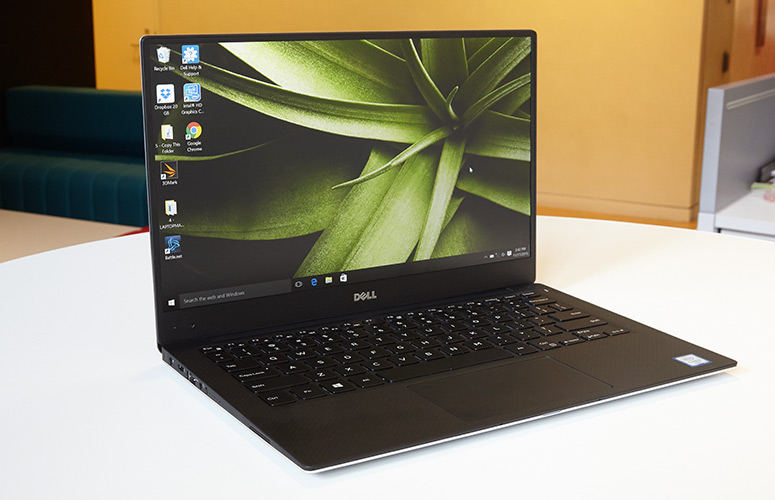
Microsoft’s Surface Pro is the most egregious example of a computer with a misleading base price. The tablet that can “replace your laptop” starts at $799; that’s the price you see highlighted in large type on Microsoft.com. However, the Surface Pro doesn’t come with the keyboard you need to actually use it as a notebook, and you will have to pay an extra $129 for this Type Cover.
But wait — there’s more. The base-model Surface Pro has a sluggish Intel Core m3 CPU and just 4GB of RAM, which won’t provide good enough performance for real work. It also packs a mere 128GB of solid-state-drive (SSD) storage, which will fill up quickly if you install software or generate a reasonable number of data files. To get a Surface Pro with decent specs — such as a Core i5 CPU, 8GB of RAM, a 256GB SSD and a keyboard — you’ll pay $1,429, which is 79 percent more than the starting price!
Be vigilant. Companies sometimes offer sales where the price of the minimum good configuration falls much closer to the starting price.
In Microsoft’s defense, a person could buy the base model and use it as an $800 media tablet. The same person probably also owns a Jeep with two-wheel drive and a Lamborghini with doors that open sideways.
Microsoft is far from alone in selling base models that no sane person should actually buy. The Dell XPS 13 is our favorite consumer laptop, but its $799 starting configuration is too underpowered, because it comes with a low-end, Core i3 CPU; just 4GB of RAM; and a tiny 128GB SSD. As of this writing, if you want a faster processor, more memory and more storage, you’ll have to move up to the $1,249 config, which is 56 percent above the starting price.
Deceptively low starting prices feel like a bait and switch. You get your heart set on a product, because you’ve convinced yourself that it’s affordable, and by the time you realize you have to pay several hundred dollars more to have a decent experience, you’re ready to swallow your pride and pull the trigger. Even worse, if you’re a less-tech-savvy shopper, you could end up buying the base configuration, mistakenly thinking it’s a good deal, and then later wondering why it doesn’t perform as advertised.
Here are some ways to avoid ending up with either sticker shock or a grossly underpowered laptop:
- Find the minimum good configuration. Instead of getting hung up on the starting price, look at the cost for the minimum good configuration. As we discuss in our How to Buy a Laptop guide, any premium laptop or 2-in-1 with a good minimum configuration should have at least a Core i5 processor, 8GB of RAM, a 256GB SSD and a 1080p resolution display.
- Consider a different laptop. You may want an XPS 13, but you may not be able to afford the $1,249 it costs to get one with reasonable performance. Instead of settling for a stripped-down configuration, consider an alternative, like the Asus ZenBook UX330UA, which has a Core i5 processor, 8GB of RAM and a 256GB SSD for under $700. There’s no doubt that the XPS 13 has a better design, a more colorful screen and longer Dell xps m1530 laptop battery life, but sometimes you have to make a trade-off.
- Wait for a sale. Many times, companies will offer sales where the price of the minimum good configuration falls much closer to the starting price.
If vendors truly had pride in their premium laptops, they would refuse to sell cut-rate versions. McDonald’s doesn’t offer a cheaper Big Mac without the buns, Paul Masson sells “no wine before it’s time” and computer manufacturers should not cheapen their flagship products with low-end specs. However, we won’t hold our breath and wait for a change.
Should I Need a Good, Cheap Chromebook Laptop
Chromebooks — the laptops that run Google’s minimalist Chrome OS instead of Windows 10 or macOS — carry a certain allure with their lower prices,automatic updates and simple interface. Suddenly, there are higher priced Chromebook models, including Google’s $999 new pixelbook.
Forum user kaiowolf asks, “I already have a PC, but I was thinking of getting a Chromebook for everyday life, just to watch videos, browse the internet, or write documents up. I would like a touch screen and I could spend up to $270. The recent Asus Chromebook caught my eye, but it’s around $460. Can anyone recommend a good one?”
We’re glad you asked, kaiowolf, as you’ve got plenty of options. The first is the $223 Lenovo N22 Chromebook, an 11.6-inch laptop. In addition to fitting within your budget and packing that touch interface you’re looking for, it’s built for durability, and its Asus a41-k52 laptop battery lasts more than 10 hours on a charge.
But also consider the $220 Asus Chromebook C202SA, a durable 11.6-inch notebook with one of the most comfortable keyboards we’ve ever seen in a Chromebook. In other words, it’s pretty much made to support all the writing you need to do. It just doesn’t have that touch screen you wanted, and its display isn’t as colorful.
If you don’t need a touch screen, though — since it will come in handy mostly for using Android apps on your Chromebook — also consider the more affordable $187 Samsung Chromebook 3. Its 259-nit display is brighter than those in other models. (The Lenovo N22 Chromebook goes up to 254 nits, while the Asus Chromebook C202SA reaches 250 nits.). That brightness allows for better viewing angles, with clear colors at 45 degrees to the left and right.
How to get a charge from reviving your laptop battery
Laptops are wonderful.
They allow us to take our computing on the go.
And,I predict their future, and death is where we move to more flat devices, even clothing, laptops, at least in the short term.
But they all feature an extremely frustrating element — the battery.
The Personal Computer Museum offers free computers to families and those in need. The most common question about the program is: Can I get a laptop?
The answer usually is no,
That’s not because of some kind of conspiracy. The problem is that laptops don’t tend to last beyond a few years. And, even after a short time of service, the battery is usually the first thing to go wonky.
If you’ve own a laptop, you know exactly what I’m referring to. A battery that used to provide three hours of power, dwindles to two, then one and then none.
Batteries have come a long way. But as computers get faster, smaller and lighter, batteries must keep pace. They need to be smaller and power devices that are much more powerful. That’s a tall order.
The good news is that there are few tricks to help bring life back to your batteries. While these methods are not foolproof, they may provide you with some improvements. The average laptop battery replacement tends to go for about $100. So, it could be worth the effort to recondition your old batteries.
An article at Online Tech Tips (http://www.battaussie.com/) has a few different methods for you to try to fix or improve your laptop battery. And, while some may seem unconventional, they can work.
One method is freezing. Remove your battery, place it inside a sealed plastic bag and place in the freezer for at least 12 hours. Then remove the Dell inspiron 1520 laptop battery from the freezer, warm to room temperature, charge fully and then let it drain. Repeat the charging and draining process a few times, and you should notice improved overall life in the battery.
Many manufacturers also offer battery calibration tools. Searching for your particular model and manufacturer can you help you with this. Following the specific instructions should help you get the most out of your battery regardless of age.
Part of the problem with batteries is that most contain multiple cells. A battery may report being dead when only a few cells are damaged.
Some of these methods (including the freezer) also will work with a tablet or cellphone battery, provided that it is removable. Batteries in some devices are not meant to be removed or serviced by users, so they are out for these tricks. If any battery shows signs of swelling, you should not try any of these methods.
Batteries give us freedom of mobility and make many devices more useful than if they are tethered with cords. Treating them with a little bit of care can make them last longer, as we wait for the perfect battery that never dies to be invented. That is something to get all charged up about.
…
Come out Saturday, from 10 a.m. to 4 p.m., to see a great use of batteries inside of robots during the third annual Robot Day at the Personal Computer Museum at 13 Alma St. Meet Star Wars robots, such as R2, drones that fight, as well as vintage robots at this free event.
Best Gaming Notebooks Under $1,000
Gaming laptops can have serious effects on your wallet, and the cost of some hobbyists models is more than $3000. But who says the right rig costs your arms, legs, and the soul of your eldest son? The financial awareness of the game player fortunately, there are some sub – $1000 laptop computer can run graphics games like Tekken 7 and the quality of tax effect: Andromeda in solid frame rate.
And thanks to Nvidia’s new GTX 1050 and 1050 Ti GPUs, you might soon have the ability to hook up a VR headset so you can start busting baddies in the virtual world. Best of all, you can use all that money you just saved to splurge on a top-notching gaming keyboard or mouse.
If you’re curious how these laptops rank by brand, check out our Best and Worst Gaming Laptop Brands to see how notebook manufacturer handles gaming systems.
So without further adieu here are the best gaming laptops under $1,000.
Best Overall Budget Gaming Laptop: HP Omen 15
The HP Omen 15 has been redesigned with an eye-catching chassis; a clicky, responsive keyboard; and an easy-to-remove panel to upgrade the hard-disk drive, solid-state drive and RAM. Add in a bright, vibrant display and some nice, loud speakers, and you have a gaming notebook that will enthrall you.
Key Specs: CPU: 2.8-GHz Intel Core i7-7700HQ CPU * GPU: AMD Radeon RX 550 GPU with 2GB of VRAM * RAM/Storage: 8GB/1TB 7,200-rpm HDD * Display Size/Resolution: 15.6/1920 x 1080
Best Productvity: Origin Eon15-S
This 15-inch gaming laptop is fairly portable at 5.2 pounds and packs good overall performance, thanks to its Nvidia GeForce GTX 1050 Ti graphics. You also get decent battery life and an understated design that stays cool while fragging. It’s a great choice for gamers on a tight budget who don’t want to make too many compromises.
Key Specs: CPU: 2.5-GHz Intel Core i5-7300 HQ * GPU: Nvidia GeForce GTX 1050 Ti with 4GB of VRAM * RAM/Storage: 8GB/256GB M.2 PCIe SSS with a1TB 7,200-rpm hard drive * Display Size/Resolution: 15.6-inch/1920 x 1080
Best Graphics Performance: Lenovo Legion Y520
For an entry-level laptop, the Legion Y520 and its Nvidia GTX 1050 Ti GPU can kick some butt. During our testing, the laptop delivered surprisingly high frame rates and was one of the few budget systems able to run the Metro: Last Light benchmark. In addition, it’s got a sleek, tapered look and the strong performance of its Intel Core i7 CPU.
Longest Battery Life: Dell Inspiron 15 7000 Gaming Laptop
Thanks to its 7th-generation Intel Core i5 processor and Nvidia GTX 1050 Ti GPU, the Dell Inspiron 15 7000 has more than a pretty red face. It has plenty of power to play most of your favorite games (on medium settings) and can multitask with the best of them. If you’re looking for a gaming laptop that can deliver solid framerates without blasting a hole in your wallet, the Dell Inspiron 15 7000 Gaming laptop should at or near the top of your list.
Key Specs: CPU: 2.5-GHz Intel Core i5-7300HQ CPU * GPU: Nvidia GeForce GTX 1050 Ti with 2GB of VRAM/Intel HD Graphics 630 GPU * RAM/Storage: 8GB/256GB SSD * Display Size/Resolution: 15.6-inch/1920 x 1080
Best Audio: Acer Aspire VX 15
Clad in black, red and silver, the Aspire VX offers a sturdy grip and a somewhat-premium look. In terms of gaming, the system’s Core i5 CPU and Nvidia GTX 1050 GPU should provide solid performance on both fronts — provided you don’t try to use it with overly taxing games or work. But where the VX 15 really shines is its audio thanks to its speakers that are well-balanced and surprisingly powerful.
Key Specs: CPU: 2.5-GHz Intel Core i5-7300HQ CPU * GPU: Nvidia GeForce GTX 1050 with 4GB of VRAM * RAM/Storage: 8GB/256GB M.2 SATA SSD * Display Size/Resolution: 15.6/1920 x 1080
Best Design: Alienware 13
What’s imposing and badass on a 17- or 18-inch laptop is downright adorable on a 13-inch rig. The $999 configuration of the Alienware 13 keeps the trademark customizable lighting of its big brothers, including the gorgeous backlit keyboard. But this laptop is more than a pretty piece of tech, packing a 7th-gen Intel Core i5 processor and an Nvidia GeForce 1050 GPU, which should deliver good frame rates on its admittedly low-res 1366 x 768 display.
Key Specs: CPU: 2.5-GHz Intel Core i5-7300HQ CPU * GPU: Nvidia GeForce GTX 1050 with 2GB of VRAM * RAM/Storage: 8GB/180GB M.2 SATA SSD * Display Size/Resolution: 13-inch/1366 x 768
New and Notable: Dell Inspiron 15 7000 Gaming Laptop (Late 2017)
Yes, we know the Dell Inspiron 15 7000 Gaming laptop was updated a few months ago. But hear us out: an even newer update is all for the better. The latest version of the notebook is leaner and more powerful than its predecessors and starts at a reasonable $999. Even better, Dell has improved the display giving consumers a choice between a 1920 x 1080 non-touch anti-glare display, a 1920 x 1080 touchscreen or a 3840 x 2160 anti-glare screen. No word on Dell inspiron 1545 laptop battery life just yet, but this notebook has a great tracklife when it comes to endurance so we’re optimistically hopeful for now.
Key Specs: CPU: 2.8-GHz Intel Core i7-7700HQ CPU * GPU: Nvidia GeForce GTX 1050Ti with 4GB of VRAM * RAM/Storage: 8GB/1TB 5,400-rpm hard drive * Display Size/Resolution: 13-inch/1366 x 768
UNVEILED: Microsoft’s new MacBook Pro killer — they say it gets 17 hours of battery life UNVEILED: Microsoft’s new MacBook Pro killer — they say it gets 17 hours of battery life(Microsoft, Apple)
Meet the Surface Book 2, upgrade version of Microsoft’s most powerful laptop, packaging impressive 17 hours battery life and more computing horsepower lower hood.
The Surface Book 2 will be available on November 16th, for a starting price of $1,499. Preorders open on November 9th.
The basic idea is the same as Microsoft’s original Surface Book, which was first released in 2015: The device looks like a normal laptop, but the screen detaches to become a standalone touchscreen tablet. For the first time though, you’ll now have a choice between a 13.5-inch and 15-inch display — the original Surface Book only offered the smaller screen size.
Apart from some minor cosmetic changes, the real Surface Book 2 upgrades are under the hood. Microsoft claims that all models of the Surface Book 2 will get 17 hours of Apple a1175 laptop battery life, with 5 hours on the unclipped tablet portion.
Aimed at Apple users
Microsoft also claims that the Surface Book 2 packs twice the power of Apple’s newest MacBook Pro, though the company is not specific about what measures this claim is based on.
The Surface Book 2 is targeted towards the same demanding customers as the MacBook Pro. It’s a premium laptop with high-end specs, aimed at power users and creative professionals who need to run demanding software like Adobe Photoshop or AutoDesk Maya.
Plus, Microsoft is touting the Surface Book 2’s gaming prowess: The company boasts that the Surface Book 2 has 5 times the graphical processing power of the original model, and that it can run gorgeous new games like “Forza Motorsport 7” in high definition at an impressive 60 frames per second.
Matt Weinberger/Business Insider
At a starting price of $1,499, the Surface Book 2 is Microsoft’s most-expensive laptop. Earlier this year, Microsoft released the $999 Surface Laptop, a mid-range Windows 10 laptop aimed at students. Microsoft also offers the tablet/laptop hybrid Surface Pro starting at $799, and the all-in-one desktop PC Surface Studio for $2199.
The original Surface Book had a troubled launch: Early adopters found that the device was riddled with bugs, but Microsoft didn’t respond with a fix until several months later.
Ultimately, though, we at Business Insider ended up loving the Surface Book. In late 2016, we said that the refreshed Surface Book was a better buy for the average user than the MacBook Pro, owing largely to the touchscreen and the higher-end specs.
Still, it’s not immediately clear where the Surface Book 2 will fit into the larger market, as overall PC sales continue their years-long decline. Plus, even with the whole range of Surface hardware on store shelves, Microsoft still accounts for a relatively small slice of the overall PC market, well behind companies like Dell, HP, or Apple.
There is hope, however.
“Microsoft wants Surface to be the best [Windows] experience going forward, a showpiece for Microsoft services,” says Patrick Moorhead, Principal Analyst with Moor Insights & Strategy. “The PC market is flat to shrinking, but there is growth on the premium space, right where Microsoft is targeting Surface.”

